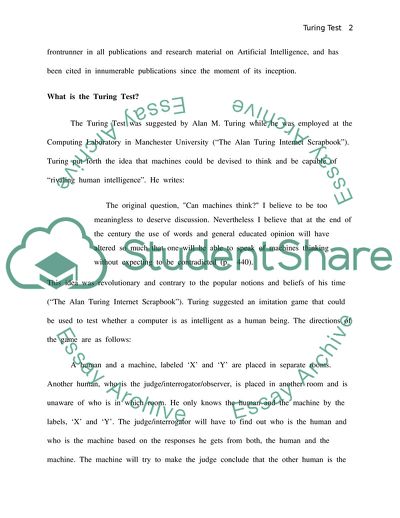Cite this document
(What is the Turing Test, and Why is it so Difficult to Pass Report Example | Topics and Well Written Essays - 2000 words, n.d.)
What is the Turing Test, and Why is it so Difficult to Pass Report Example | Topics and Well Written Essays - 2000 words. https://studentshare.org/information-technology/1754794-what-is-the-turing-test-and-why-is-it-so-difficult-to-pass
What is the Turing Test, and Why is it so Difficult to Pass Report Example | Topics and Well Written Essays - 2000 words. https://studentshare.org/information-technology/1754794-what-is-the-turing-test-and-why-is-it-so-difficult-to-pass
(What Is the Turing Test, and Why Is It so Difficult to Pass Report Example | Topics and Well Written Essays - 2000 Words)
What Is the Turing Test, and Why Is It so Difficult to Pass Report Example | Topics and Well Written Essays - 2000 Words. https://studentshare.org/information-technology/1754794-what-is-the-turing-test-and-why-is-it-so-difficult-to-pass.
What Is the Turing Test, and Why Is It so Difficult to Pass Report Example | Topics and Well Written Essays - 2000 Words. https://studentshare.org/information-technology/1754794-what-is-the-turing-test-and-why-is-it-so-difficult-to-pass.
“What Is the Turing Test, and Why Is It so Difficult to Pass Report Example | Topics and Well Written Essays - 2000 Words”. https://studentshare.org/information-technology/1754794-what-is-the-turing-test-and-why-is-it-so-difficult-to-pass.


